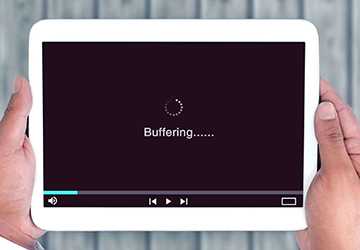5 Solutions for Video Streaming Issues on Various Devices
As video streaming becomes increasingly essential for entertainment, education, and work, buffering, pixelation, error messages, and other streaming issues can be frustrating.
We've all faced this problem before. We sat down to watch the latest show with great anticipation but spent more time waiting for the video to load and cache than watching any content.

The reasons why streaming fails to deliver a perfect viewing experience on countless devices, from smart TVs to mobile phones, can be complex.
Factors such as internet speed, device capabilities, network traffic, and service provider issues can cause the problem. Finding the real culprit requires some good old-fashioned trial and error.
The good news is that we can improve performance before we throw away the remote in rage. Here are adjustments you can make to fix five common video streaming issues.
Here are five solutions to fix video streaming issues:
Solution 1: Increase bandwidth
Choppy, endlessly buffered videos are the most common streaming issues due to insufficient internet speed. Streaming platforms recommend using at least 3-5 Mbps of bandwidth for SD quality and up to 25 Mbps for Ultra HD.
Pixelated and laggy videos are inevitable if your provider falls below these levels. The simplest solution is to upgrade to a premium internet plan that guarantees faster download speeds.
Switching from WiFi to a wired Ethernet connection helps achieve smoother speeds. Another WiFi optimization option worth trying is strategically relocating your router away from signal-blocking devices.
Compatible Devices: All media streaming devices, including smart TVs, streaming sticks/boxes, game consoles, computers, smartphones and tablets.
Solution 2: Lower the video quality settings
Have you ever been frustrated that Netflix or Prime seemed blurry compared to cable TV? Well, video quality degradation can be smoothed by buffering, which reduces bandwidth load.
Every streaming app allows you to adjust the playback resolution manually in the settings. Alternatively, newer apps have an "auto" option that defaults to lower quality during peak times and automatically increases quality when more bandwidth is available.
It might be worth giving up 4K resolution for a consistent video that doesn't stutter every five minutes.
Compatible devices: All media streaming hardware and applications allow video adjustments.
Solution 3: Update and restart your device
Like any software, streaming apps and platforms regularly release updates to address bugs that impact performance. Likewise, device operating systems release new versions that improve hardware video processing.
Make sure automatic application/device updates are enabled. If streaming quality recently took a nosedive, manually updating software could help. As a quick fix, restarting the device will reset components and resolve any temporary glitches.
Compatible devices: Smart TVs, media players, gaming systems, laptops/tablets/mobile phones.
Solution 4: Limit bandwidth contention
Slow internet is often a deal breaker for streaming. However, if your network tests above the HD threshold of 25 Mbps and YouTube is still experiencing dropout and buffering issues, try stopping other network activity.

Schedule video calls, system updates, game downloads, and other activities for off-peak evenings when streaming traffic is low.
For more control, check your router's quality of service settings. These settings allow you to prioritize devices used for streaming so that they receive bandwidth first.
Compatible Devices: All units on the same local network.
Solution 5: Resolve provider issues
Sometimes, the main problem lies on the streaming provider's side—900 million subscribers worldwide put a strain on even the most comprehensive networks.
Server failures are not uncommon. Top-rated shows like Stranger Things Season 1 can also temporarily overload servers.
If streaming still needs to be smoother on all devices, no matter how you optimize, it's worth contacting support to check for known issues in your area.
Test viewing on a secondary streaming platform like HBO Max or Hulu. If the same problem is masked, your network may still be the culprit.
Compatible devices: Potential server-side streaming issues affect all connected media hardware.
Conclusion
There's nothing more annoying than video playback pausing and buffering endlessly while Determining the root cause of device limitations, internet speeds, connectivity issues, and streaming platform issues is critical to restoring smooth streaming.
Finding the right solution to eliminate pixelation and constant rebuffering can take trial and error.
But next time you want to sit back and enjoy your favourite show without the spin of doom, all the effort will be worth it!
Related Posts
- The Impact of Artificial Intelligence in the Healthcare Sector
- 10 Popular 5G Applications Revolutionizing Communication
- 4 Stand Outs in Smart Home Technology In 2021
- Recent Advances and Applications of Artificial Intelligence
- Selecting the Perfect Laptop to Suit Your Requirements
- The Transformative Impact of Wearable Technology on Health Monitoring